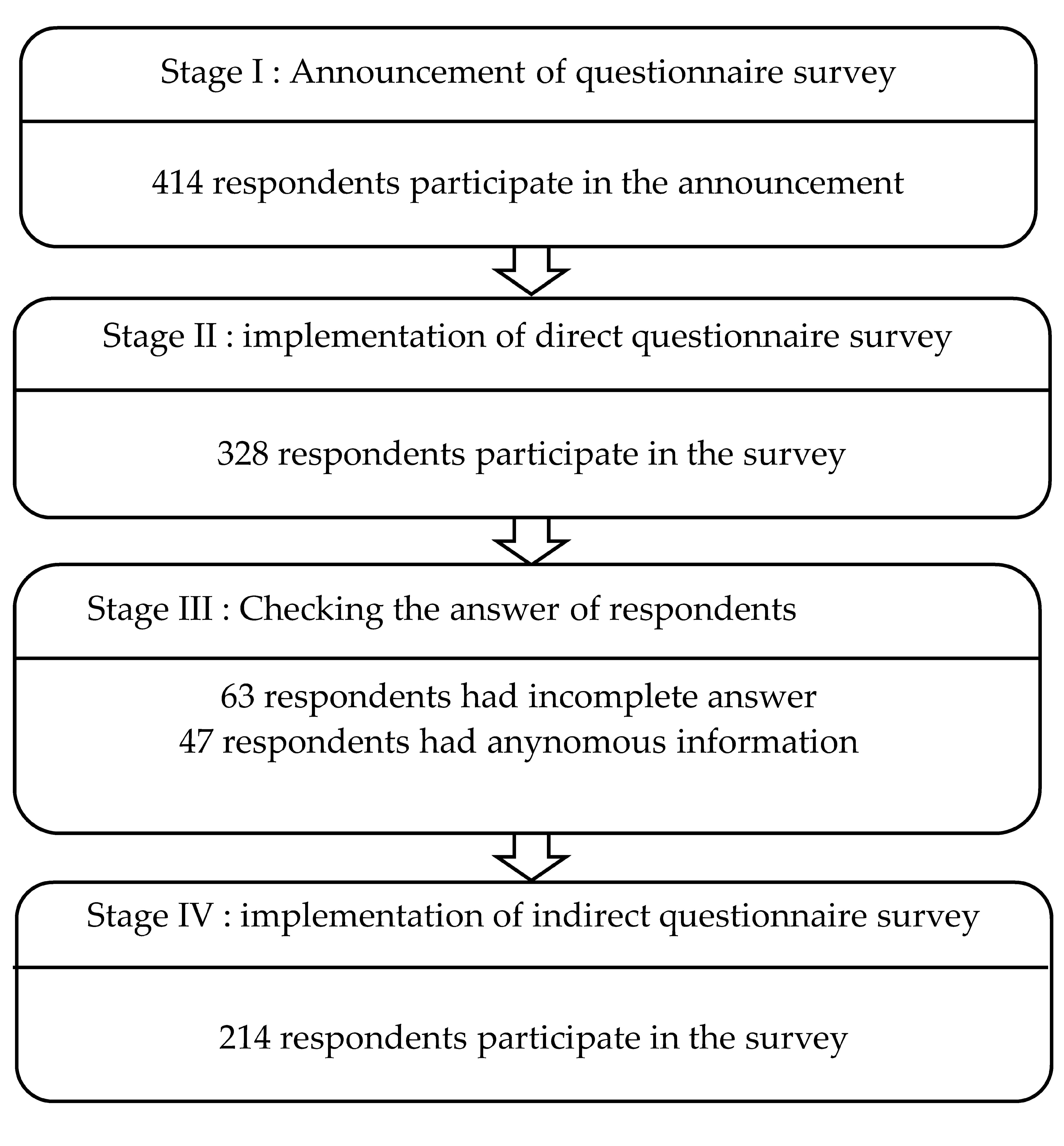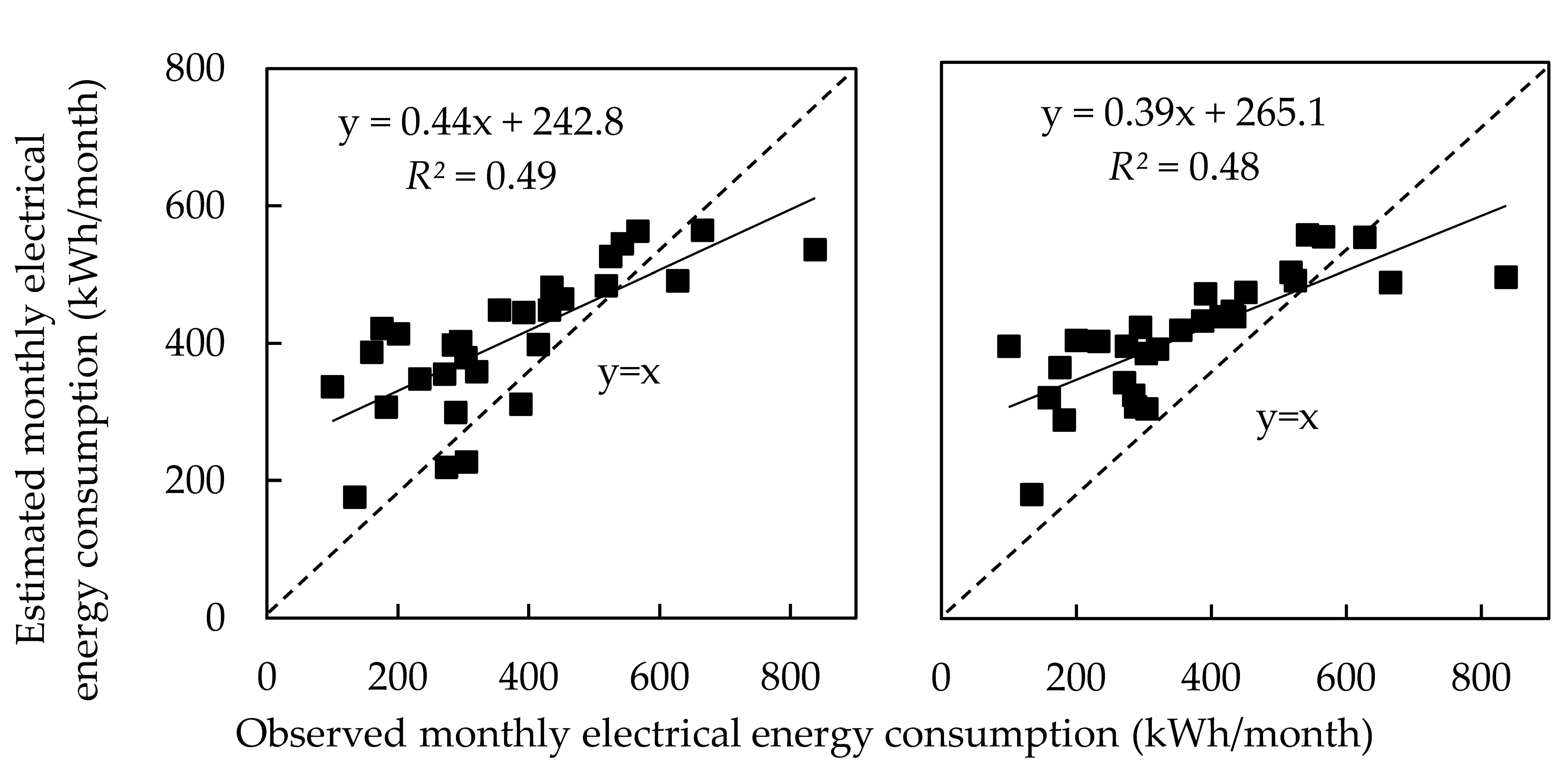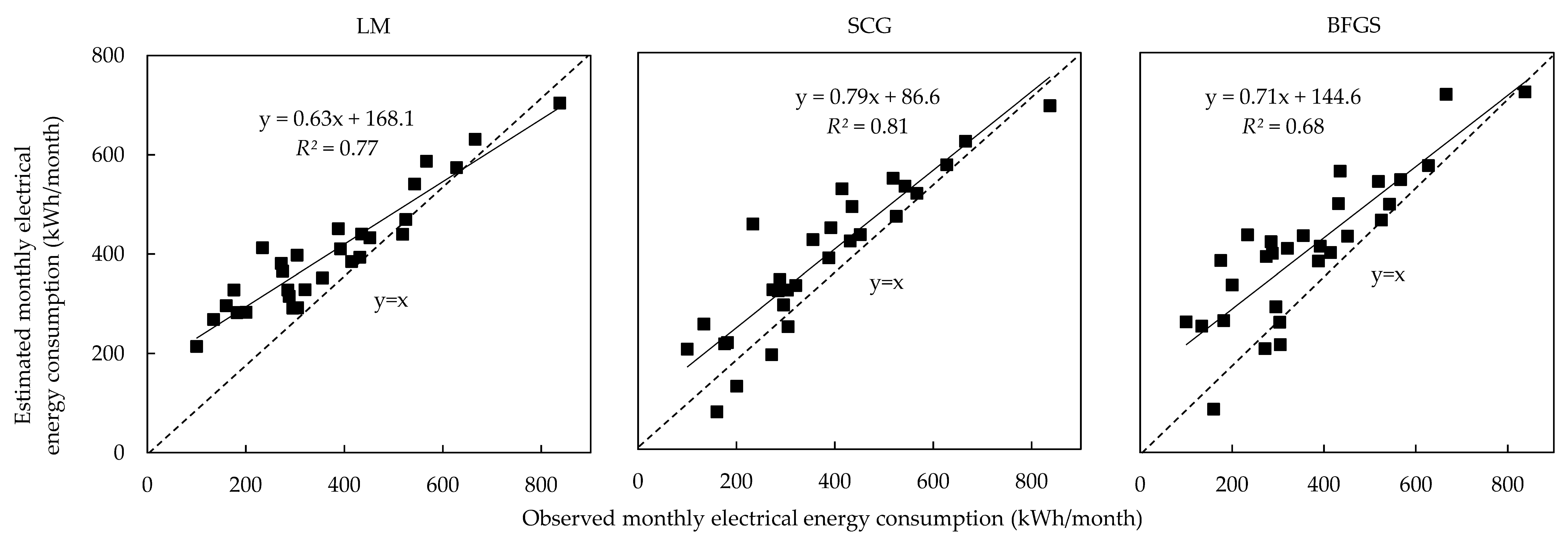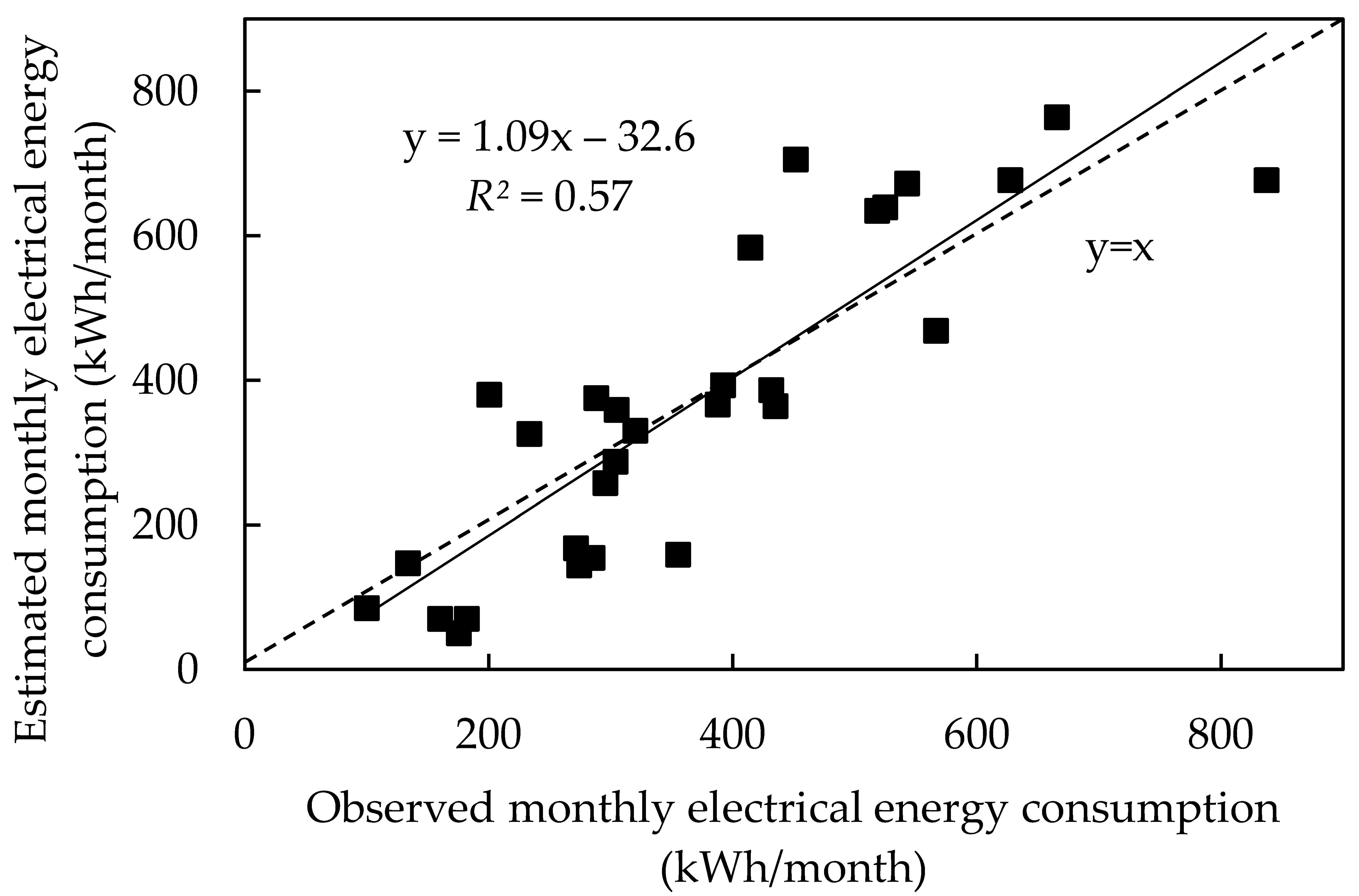1. Introduction
The increasing CO
2 level worldwide, due to electrical energy consumption, is the fundamental factor of environmental damage such as the depletion of the ozone layer, global warming, and climate change. The emission of CO
2 has increased at a rate of 1.3% every year [
1]. The emission of CO
2 can be classified as being from sources such as coal, natural gas, and oil in the industry and building sectors. The building sector consists of commercial and residential sectors that contribute 28% of the global energy-related CO
2 emissions [
2]. Malaysia had a global commitment to reduce 45% CO
2 emission intensity by 2030, as stated in the Kuala Lumpur Low Carbon Society 2030 Blueprint [
3]. Therefore, optimization and efficiency improvement in the residential and commercial sections are necessary to achieve low carbon emissions in Malaysia.
The consumed energy levels in Malaysia escalated due to the contribution of residential sectors, being responsible for 20.7% of the total consumed energy [
4]. The average electrical energy consumption was 345 kWh per month, from a survey of 348 samples in Malaysia [
5]. Zaki et al. [
6] performed a survey on occupant behavior regarding air conditioner consumption for a low-cost apartment in Kuala Lumpur. They confirmed that occupants tended to use AC without being affected by outdoor temperature in terms of the usage of AC in the bedrooms. Furthermore, most occupants used AC at night-time, a maximum of 50% of them being used in bedrooms. Ranjbar et al. [
7] analyzed the time series datasets of electrical energy consumption during the El Nino climate situation. They found that the relationship between electrical energy usage and the outdoor air temperature was more notable in the night-time because the occupant used AC in the night-time rather than in the daytime. Hisham et al. [
8] analyzed the air conditioning and total load diversity in typical residential buildings in Malaysia, and revealed that 75% of the occupants utilized AC almost every day for about five to six hours per day, at the rate of 0.93 kWh/day during the daytime and 3.43 kWh/day during the night-time. The correlation coefficient between total daily AC consumption and the mean daily outdoor temperature ranged from 0.1 to 0.48. Furthermore, Aqilah et al. [
9] investigated the electrical energy consumption and indoor thermal environment for typical air-conditioned residential dwellings in Malaysia. The results showed that the total and the daily averages are 14.5 kWh/day and 3.9 kWh/day, respectively. The consumed electrical energy is predicted to increase because of economic improvement, occupant behavior and the availability of appliances at home. Therefore, a strategy for reducing electrical energy needs to be implemented to address the problem in Malaysia.
The strategy implementation is quite complex, since many determinant factors could affect the consumed electrical energy levels in a residential household’s consumed electrical energy, such as sociodemographic issues, house characteristics, appliance characteristics, and occupant behavior factors. Moreover, those factors could have interconnected interactions with each other, as established by Jones et al. [
10]. For example, Kim [
11] studied determinant factors for a household in Korea, based on 2250 dwellings; Kim concluded that the factors showed a direct and indirect correlation with electrical energy consumption. It also stated that the use of a cooling appliance had a significant correlation with age, the education level of the head of the household, income, family composition, total floor area and the number of people living in the building. Furthermore, Chen et al. [
12] examined the factors affecting household electrical energy consumption in China, based on 642 households during winter and 838 households during the summer. They ascertained that the number of rooms, number of people living in it, the age of the occupants, the number of AC units owned, education level, and AC consumption were interconnected. Similar findings from Shahi et al. [
13] verified the energy usage in rural, semi-urban and urban areas in Nepal, based on 442 households, which concluded that the energy usage was linked to income, job, number of residents, education level and the use of LED lamps.
Mathematical models are required to evaluate the determinant factors affecting electrical energy consumption, such as an artificial neural network (ANN). Previous studies using the ANN model, such as that by Roque [
14], developed the model based on 136 houses in Canada, and concluded that the combination of sociodemographic factors, the building, and the number of hours spent at home could explain 91% of the variance. Buratti et al. [
15] used the ANN model based on house characteristics and additional power systems in Italy, and found a variance of 98%. Khayatian and Sarto [
16] applied the ANN model to evaluate the energy performance certificate of residential houses, based on 220,000 houses in Italy, which concluded the variance as being between 81 and 91%. Contrary to the findings of previous studies, Lee et al. [
17] utilized the ANN model to predict electrical energy consumption based on socio-demographic factors and occupant behavior, and stated that the model only could explain 37% to 42% of the variance. Hawkins et al. [
18] established an ANN model to investigate the determinant factors affecting electrical energy usage in the UK for university buildings, based on 1872 rooms. The results showed that the model had a mean absolute percentage error (MAPE) of 34% and a variance (CV) coefficient of 33.6%. Pombeiro et al. [
19] developed an ANN model for one commercial building in Portugal, based on the real-time dataset of one month with 3381 datasets, and concluded that the model could explain 68% of the variance, with a mean absolute error (MAE) of 8.5 and mean square error (MSE) of 17.2%. Beccali et al. [
20] studied the development of the ANN model to find the energy performance of 151 buildings in Italy, and concluded that the MAE of the model was 1.99. Most of the previous studies were conducted in a temperate region with limited determinant factors, as performed by Roque [
14], Buratti et al. [
15], Lee et al. [
17], and Hawkins et al. [
18], while other studies did not consider determinant factors in their research, such as Khayatian and Sarto [
16], Pombeiro et al. [
19], and Becalli et al. [
20].
There are several studies of residential energy consumption in a tropical climate, especially in Malaysia. Zaki et al. [
21] developed a model for generating air-conditioner operation schedules, based on 38 dwellings in Malaysia. The results showed that the probability density model offered good performance in predicting the observation data. Ranjbar et al. [
22] analyzed the short-term measurement of real-time electrical energy consumption in Kuala Lumpur during hot weather, and concluded that the AC contributed 19.4% to 52.3% of the total consumed electricity. Swarno et al. [
23] observed the diurnal variation of the urban microclimate in Kuala Lumpur, and indicated that urban microclimatic parameters were influenced by monsoon seasons and the urban topography. Sena et al. [
24] constructed a conceptual framework of electrical energy consumption modeling for Malaysian households, using an artificial neural network. They suggested that the combination of sociodemographics, house characteristics, occupant behavior, and appliance characteristics were important in developing an ANN model for estimating electrical energy consumption. Aqilah et al. [
9] observed real-time electrical energy consumption for selected Malaysian households at middle-income levels. They classified three types of appliances: cold, active and standby appliances. The results showed that cold appliances such as refrigerators consumed 118.8 kWh/month, followed by cold and hot appliances, such as water dispensers, which consumed 52.5 kWh/month, and standby appliances, such as televisions, which consumed 0.9 kWh/month. The consumed electricity was higher in the night-time, due to the use of the air conditioner. Wijaya and Tezuka [
25] assessed the determinant factors using a multiple linear regression model; this confirmed that sociodemographic, occupant behavior and appliance characteristics showed a significant contribution to the electrical energy consumption for residents in Indonesia. Azlina et al. [
26] studied influencing factors such as sociodemographics, house characteristics, occupant behavior and appliance characteristics, and concluded that those factors had a significant impact on the variability of household electricity consumption. Some studies were conducted in tropical countries; however, the comprehensive impact of the determinant factors of techno-socioeconomics with respect to electrical energy consumption, based on the ANN model approach, was not investigated.
Most of the previous electrical energy consumption models based on determinant factors were developed in temperate regions, such as those of Hawkins et al. [
18], Becalli et al. [
20], and only a few studies were conducted in tropical regions, as were those performed by Wijaya and Tezuka [
25] and Azlina et al. [
26]. The determinant factors of techno-socioeconomic decisions in the temperate region might differ from those in the tropical region due to the difference in socio-economic level, cultures, and climates condition, which could affect the model’s performance. Previous studies did not consider the various impacts of determinant factors in a tropical region with respect to the performance of the ANN model. The current study aims to investigate the performance of the ANN model, based on different determinant factors. This study also aims to determine the best combination of determinant factors regarding Malaysian households, when estimating monthly electrical energy consumption.
4. Discussion
The ANN model of electrical energy consumption, based on various determinant factors of techno-socio economics, has been developed using different types of training functions, such as the Levenberg–Marquardt (LM), scaled conjugate gradient (SCG), Broyden–Fletcher–Goldfarb–Shanno (BFGS), and one-step secant (OSS). However, the ANN model based on house characteristic factors showed poorer performance than the model based on occupant behavior, by explaining 49% and 81% of the variance, respectively. Furthermore, the model based on occupant behavior showed less error than the model based on house characteristics for mean absolute error (MAE), mean square error (MSE), root mean square error (RMSE), mean absolute percentage error (MAPE), coefficient of determination (R2), and mean bias error (MBE). Thus, the results confirmed that the occupant behavior factors could moderately explain the monthly electrical energy consumption variance, rather than house characteristic factors.
Additional factors in the ANN model reduced the model’s performance in estimating monthly electrical energy consumption. The combination of socio-demographic and appliance characteristics on the ANN model only achieved 59%. This was less than the ANN model, which only achieved 59%; this was less than that of the model based on occupant behavior factors, while the combined socio-occupant and appliance-occupant factors could explain 53% and 57% of the variance, respectively. On the other hand, a combination of socio-demographics, appliance characteristics and occupant behavior could explain 61% of the variance. Therefore, a combination of socio-demographics, appliance characteristics, and occupant behavior could explain 61% of the variance better than doubled-up combined factors on the model. Therefore, those ANN models using combined determinant factors could be classified as reasonably accurate estimates, based on less than 50% MAPE.
An ANN model based on socio-appliance-occupant factors showed less error than others based on the combined factors in MSE, RSME, CV and MBE. In contrast, the lowest MAE was demonstrated by the ANN model based on socio-appliance factors. The ANN model based on combined factors showed higher error than those of the models based on single factors such as house characteristics and occupant behavior. The results confirmed that the increase of the explanatory variable on the model tended to reduce the performance of the ANN model when estimating monthly electrical energy consumption.
The current ANN model showed better performance in estimating monthly electrical energy consumption compared to those of Lee et al. [
17], Hawkins et al. [
18], and Kim et al. [
37]. Nevertheless, the current model showed a higher MSE than that of Lee et al. [
17] and Kim et al. [
37], due to the limitations of data testing. On the other hand, the current model showed a similar CV compared to Hawkins et al. [
18], due to a similar capacity of data testing.
Limitations and Future Study
The current study had a limitation in the number of samples. The total datasets used in this paper were 214, divided into two sets: 184 for developing the ANN model and 29 for testing model performance. The current study only covered a population sample of students in the Universiti Teknologi Malaysia for 21,997 students, with a confidence level of 95% and a margin of error of 7% based on a sample calculation from Cochran [
38].
The performance of the current model was also restricted due to the small number of samples. The model showed reasonable accuracy based on MAPE and explained 81% of the monthly electrical energy consumption variance. Therefore, the model only achieved moderate accuracy in estimating monthly electrical energy consumption. The ANN model was limited to a feed-forward multi-layer perceptron neural network with the activation function of a hyperbolic tangent. The model optimization was manually performed by randomly selecting several hidden layers, and the number was not used to classify the model performance. The calculation of model performance was performed based on the work of Buratti et al. [
15], due to the limitations of computer specification. The classifications of the ANN model were based on five training functions: the Levernberg–Marquardt, Broyden–Fletcher–Goldfarb–Shanno, the scaled conjugate gradient, and one-step secant Bayesian regularization. Some results showed overestimated monthly electrical energy consumption, which was caused by the limitations of data training.
Future studies should increase the number of samples in Malaysia. Proportionate and random samples were stratified based on certain parameter levels such as income, occupation or educational background. Therefore, the model performance could be improved with a more specific classification. Future studies need to consider other approaches, such as a top-down approach, a bottom-up approach based on engineering methods, and a hybrid model based on the grey box approach. The comparison between estimated and observed monthly electrical energy consumption could be developed into the baseline of Malaysian households as an essential energy management system. The developed model in this paper could be improved by using other scopes such as automation control or mechatronics to create intelligent appliances.
5. Conclusions
The research was intended to investigate the performance of electrical energy consumption based on the determinant factors of techno-socioeconomics from 184 items of data for developing the model and 29 items for the testing model. Therefore, the ANN model was selected to investigate the non-linear characteristic between determinant factors and monthly electrical energy consumption.
The results of the ANN model based on single factors showed the following:
The model based on occupant behavior using scaled conjugate gradient explained 81% of the variance with a MAPE of 18%.
The model based on house characteristics by Broyden–Fletcher–Goldfarb–Shanno explained 49% of the variance with a MAPE of 22.5%.
The ANN model based on double and triple combined factors was described by the following:
The model based on socio-demographic and appliance characteristics factors using the one-step secant showed the best performance with a MAPE of 21% and an R2 of 0.59.
The model based on socio-demographics and occupant behavior according to Levenberg–Marquardt explained 53%, with a MAPE of 28.2%.
The model based on appliance characteristics and occupant behavior using the one-step secant presented at 57% with a MAPE of 44%.
The model based on socio-demographics, appliance characteristics and occupant behavior using scaled conjugate gradient, explained 61% with a MAPE of 22.4%.
The ANN model based on occupant behavior factors showed the best performance compared to other models, which means that the factors could represent the monthly electrical energy consumption for Malaysian households. At the same time, the model based on house characteristics showed poorer performance than that of the model based on occupant behavior. The impact of socio-demographic and appliance characteristics was almost similar; however, in some models, appliance characteristics tended to have more effect on the monthly electrical energy consumption variance.
The findings of the current study recommended that the occupant behavior, socio-demographic and appliance characteristic factors should be considered for the additional information of determinant factors when designing an energy-efficiency strategy in the household. This is because those factors showed a moderately significant impact on the variance of monthly electrical energy consumption. In comparison, house characteristics did not significantly impact the variance of monthly electrical energy consumption. However, the house characteristic factors might have an indirect impact on other factors. Therefore, house characteristic factors could be moderately considered determinant factors, although the impact might not be too significant compared to other factors.





















